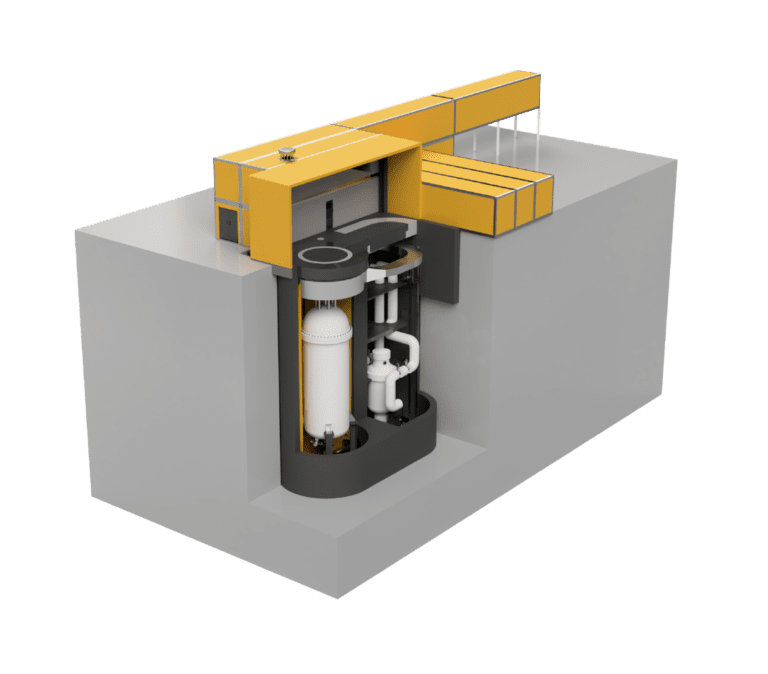Enabling atomic innovation
During the past several weeks there have been a number of developments supporting a growing movement to enable nuclear energy innovators to succeed in the US. Leaders are realizing that nuclear energy, which has deep roots in the US and has proven its capability to produce reliable power without producing any air pollution, should be enabled, not discouraged.
The impetus for action might have been stimulated by the realization that even Bill Gates had determined that the process of obtaining approval from the Nuclear Regulatory Commission for any technology that is different from traditional light water reactors was so hard that it was worthwhile to target China as the venue for initial deployment of his TerraPower technology.
On April 12th, the Nuclear Innovation Alliance released a document titled Enabling Nuclear Innovation: Strategies for Licensing Advanced Reactors.
Dr. Ashley Finan, (PhD in Nuclear Engineering from MIT) and a scientist on the staff of the Clean Air Task Force is the report’s principle author. She was assisted by several knowledgable and experienced contributing authors. The names listed below might be familiar to the Atomic Insights readers who have spent their careers in the nuclear industry or in the NRC.
- Francis “Chip” Cameron, CameronGray, LLC
- Joseph R. Gray, CameronGray, LLC
- David B. Matthews, Nuclear Energy Consultants, Inc.
- Edward G. Wallace, GNBC Associates, Inc.
The NIA report isn’t a lonely document that will reside on an increasingly dusty shelf. Senators Booker (D-NJ) and Whitehouse (R-RI) introduced S.2795, which is titled either the Nuclear Energy Regulatory Modernization Act (NERMA) or the Nuclear Energy Innovation and Modernization Act, depending on the source of information about the bill. Senators Inhofe (R-OK) and Crapo (R-ID) are co-authors of the legislation.
Reading the report (Enabling Nuclear Innovation) and the bill (Nuclear Energy Innovation and Modernization Act (S.2795)) side by side reveals that there has been a successful effort to coordinate policy recommendations and the legislation needed to implement those recommendations.
Tomorrow, April 21, the Senate Committee on Environment and Public Works Subcommittee on Clean Air and Nuclear Safety will hold a hearing on the bill, with the following invited witnesses:
- Victor McCree, Executive Director of Operations, Nuclear Regulatory Commission
- The Honorable Jeffrey S. Merrifield, Chairman, USNIC Advanced Reactor Task Force
- Maria Korsnick, Chief Operating Officer, Nuclear Energy Institute (NEI)
- Dr. Ashley E. Finan, Policy Director, Nuclear Innovation Alliance (NIA)
- Christina A. Back, Division Director, General Atomics Inertial Fusion and Advanced Fission
- Dr. Edwin Lyman, Senior Scientist, Union of Concerned Scientists Global Security Program
Aside: I hope Dr. Lyman does not feel too lonely. Truthfully, I really don’t care if he does. End Aside.
NEI has issued a statement expressing its support for the legislation.
A few days before Dr. Finan’s report was released in final form, the NRC issued Solicitation of Public Comments for the Advanced Non-Light Water Reactor Design Criteria.
It would be worthwhile for people with a direct interest in the process of enabling the approval of advanced reactors to carefully read the NRC’s Design Criteria. Before June 7th, provide concise, actionable comments in any area where there are potential pitfalls that might negate the NRC ability to fulfill its mission of protecting health and safety, ensuring the common defense and security, and protecting the environment of the United States by allowing qualified licensees to build and operate safe, refined nuclear technologies.



Rod,
If you haven’t already, you should listen to this Freakonomics episode with Corey Booker. I have a feeling you may become a pretty huge fan of him. He has a ton of political potential, it would seem.
http://freakonomics.com/podcast/cory-booker/
-EntrepreNuke
This bill sounds like excellent, excellent news that is much needed if the U.S. is going to be involved in deploying advanced nuclear reactors.
Yes, I concur, it does sound like excellent news. After all, dealing with the U.S. nuclear regulatory regime, any news is good news! But it seems like people are listening.
The category of “SMR” is now accepted through every level of the industry (governmental, commercial as well as R&D communities). This is something one should take time to pause and ponder. Whether it will make an actual difference in terms of building a robust deployment of this technology, at least in the U.S., is certainly open to speculation. We will see.
What SMRs do, looking way out at least 2 decades (total speculation on my part) forward under the best possible outcome, is actually interesting. The SMR category covers both Gen III and Gen IV reactor tech. For purposes of this commentary, I’ll ignore the arguments over which is occurring or better. Rather, looking at the advantages of SMRs is rather a fun exercise and worth pondering. I don’t consider, at all, SMRs competing with utility-scale plus-1000MW units. Rather I see them as quite complementary to each other, allowing for a more leveled approach to financing and grid expansion. They will work hand in glove with each other, offer the ‘customer’ (PUCs, ISOs, Utilities, Industries relying on process heat, Deslination projects, regional and national energy planners, etc) an easier and more flexible way to increase generation incrementally if needed. One can position a SMR much closer to the load than a large utility-scale reactor (say placement at regional transmission substations). But there will still be a need for large 1000MW+ reactors for back bone base load.
It is an exciting time to be a nuclear advocate.